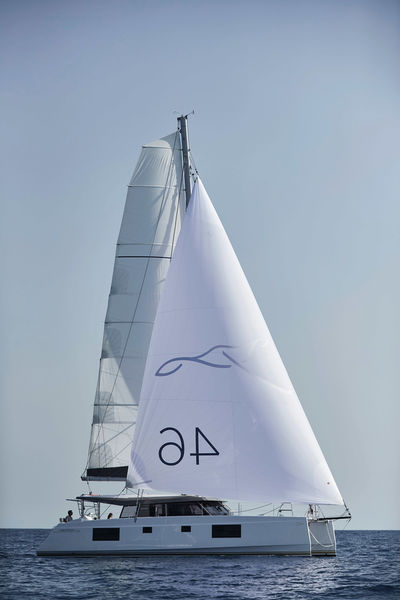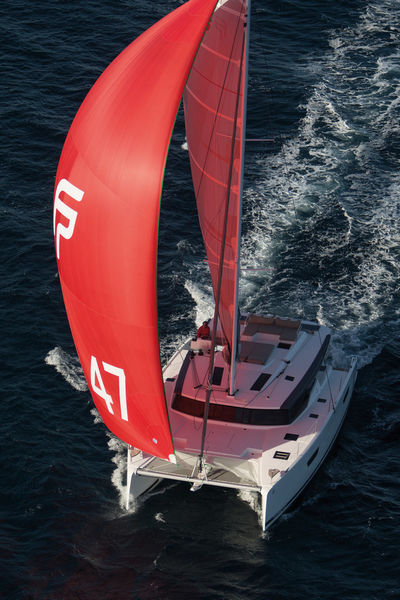
Issue #: 180
Published: November / December 2021
- Price per issue - digital : 6.50€Digital magazine
- Price per issue - print : 8.50€Print magazine
- Access to Multihulls World digital archives Digital archives
When heading off cruising and especially offshore, a downwind sail is essential to get you going in light airs, to maintain good average speeds as soon as there’s wind, and of course to escape the hum of the engines - to say nothing of the fuel tank levels. And if you had to choose just one, which of these fairly lightweight sails should you choose?
In theory, if you’re doing a transatlantic passage in the trade winds, a good old symmetrical spinnaker that allows you to go far downwind to limit gybes would fit the bill. Likewise, if you’re only going coastal cruising, a gennaker allowing you to enjoy some good reaching and also do some upwind work if necessary (yes, it does happen sometimes that the wind refuses to cooperate as you close the coast) would be ideal. But in practice, things are more balanced. Starting with the budget: once you’ve purchased your multihull, and added all the options and equipment on your list, is there enough left in the kitty for a second or third sail? Once all your gear is stowed in the lockers, do you still have room to store this extra sail? Are you alone on board to handle the sails or are you accompanied by a cheerful and dynamic crew ready to trim every sheet? Do you sail in moderate winds, or do you only go out when the breeze picks up? Or both, by orce of circumstance? Is your multihull a bit of a plodder or a machine that creates its own wind? So many parameters to get to grips with before choosing one sail over another.

Downwind sails are like a turbo on our cruising multihulls. They promise increased speed as soon as the wind picks up, meaning you avoid having to start the engines too early.
Gennakers code and sails
Known as reachers back in the 1970’s, gennakers and code sails (code 0, smart code or code D depending on the subtleties of the cut, the weight and... the fashion) are sails whose optimum range of use goes from 45° to 120° off the wind. Higher points of sail will be tenable in lighter airs - 4 to 8 knots - then, as the wind picks up, you’ll need to bear away to stay within the range, limited to between 15 and 18 knots, depending on the strength of the sailcloth. Their triangular shape is similar to that of a very large lightweight genoa with an overlap that can go from 130 to 180% depending on whether you want to really shift in light airs or lengthen your stride in medium conditions. Code sails have a visual aspect closer to a flat asymmetrical spinnaker and because they are initially designed with more volume toward the leading edge with the aim of replacing a spinnaker in a racing wardrobe if required to respect class or measurement constraints. Officially, they are spinnakers, while the gennaker is to be classified as a XXL-sized lightweight genoa. The gennaker is tacked down on a line and is set on an anti-twist luff tape which is hoisted on a furler (in all-or-nothing mode) which makes them particularly easy to unfurl, to trim, to furl and to stow, even short-handed. As long as the foot has a UV strip, the gennaker can even be left bent on, like a genoa. The code D or C is a cruising sail, at a point between gennaker and asymmetric spinnaker.

A large asymmetric spinnaker is an excellent sail for broad and beam reaching. Though hoisting it up and getting it down, even with a sock, requires physical commitment and ...
What readers think
Post a comment
No comments to show.